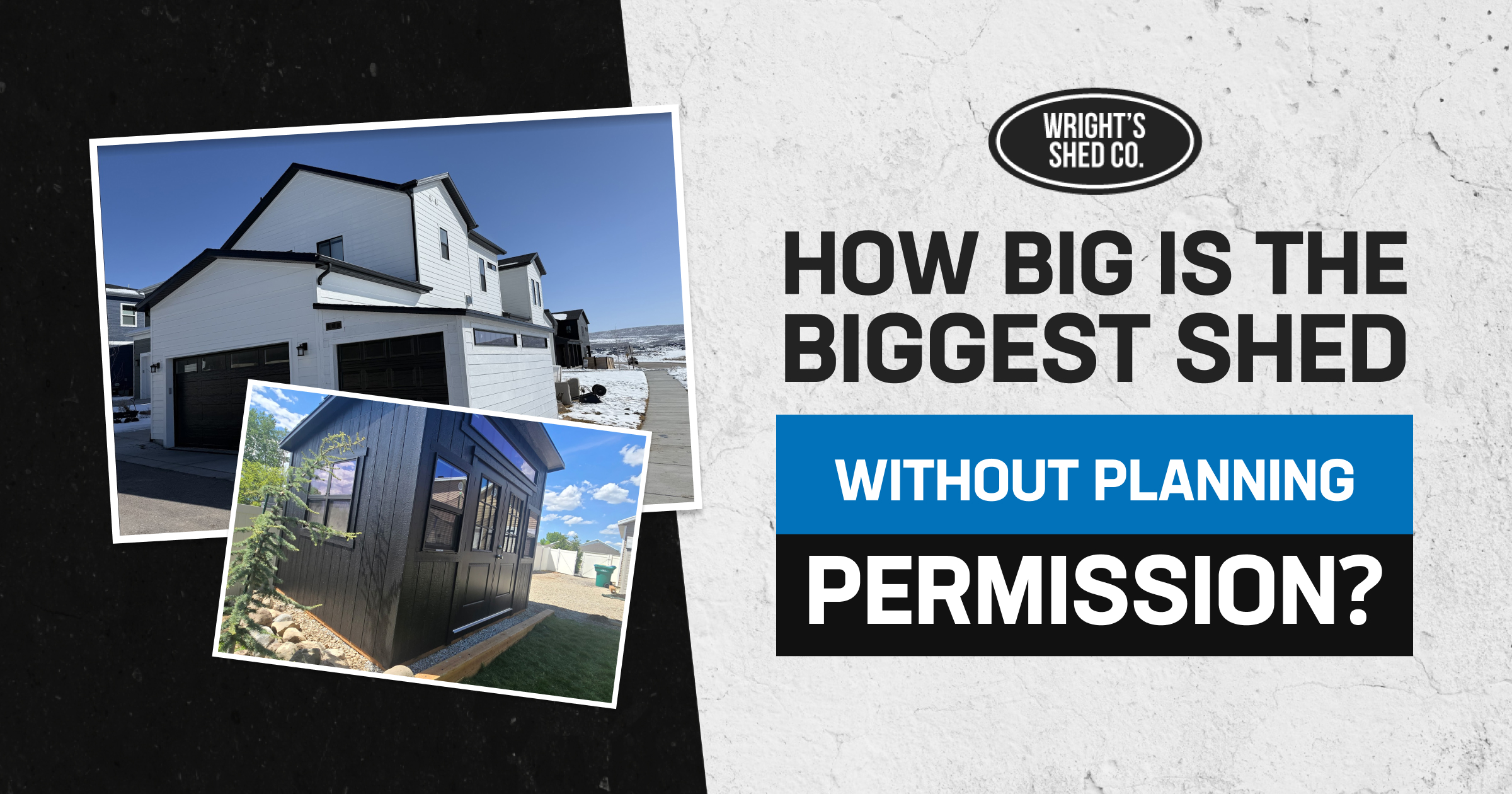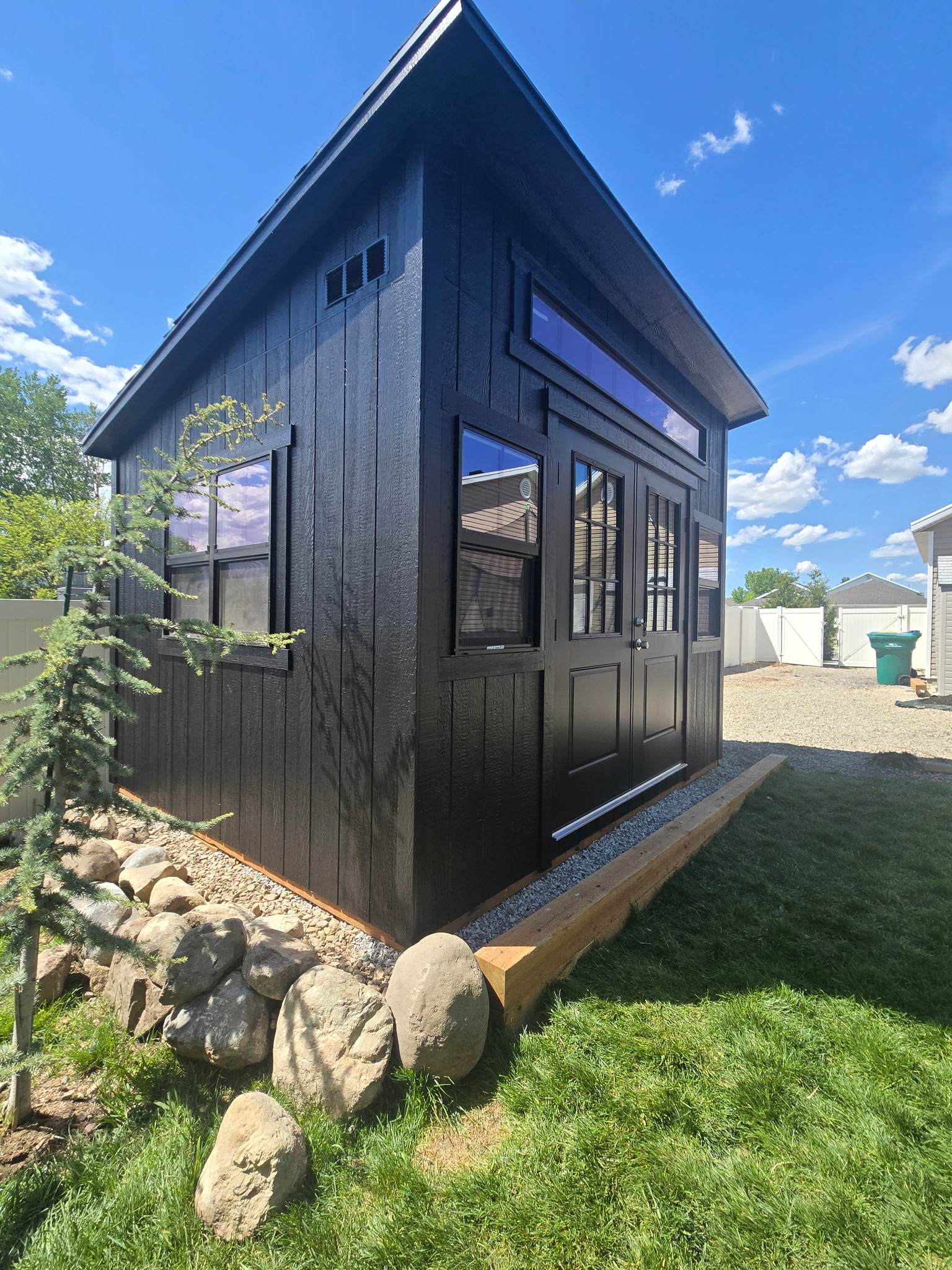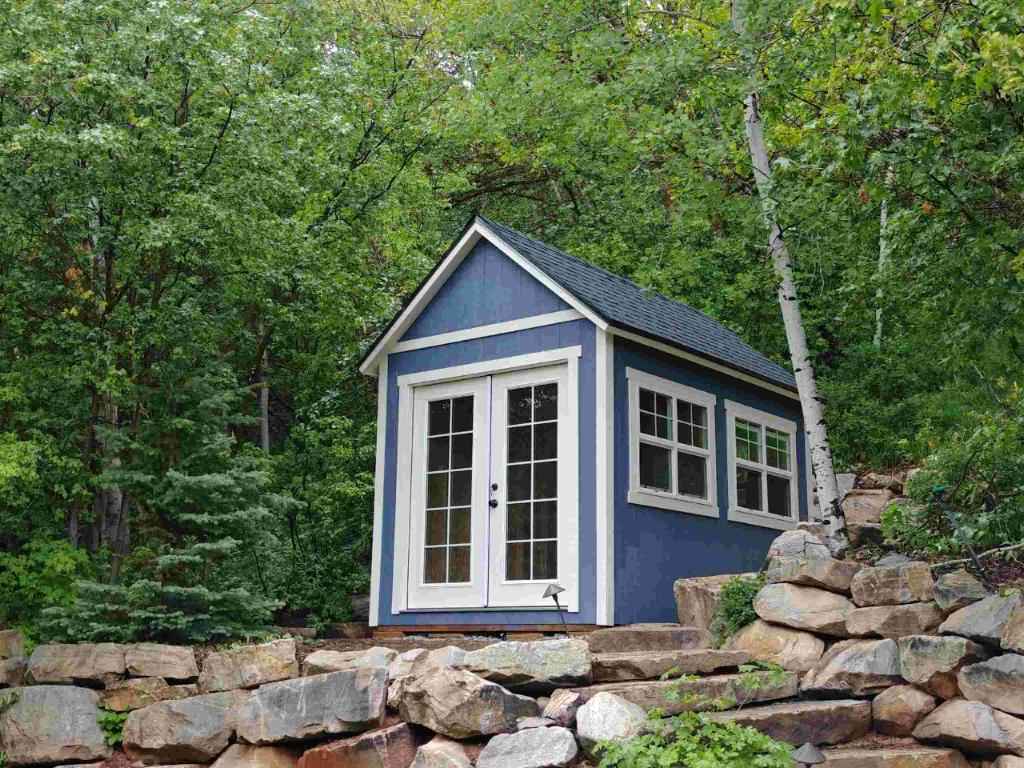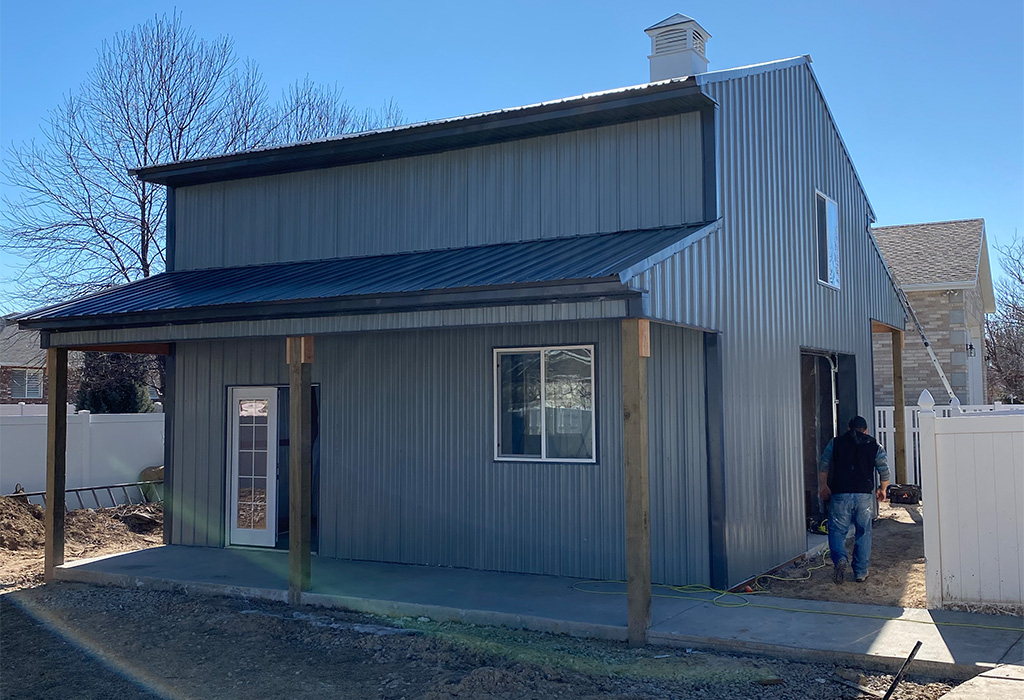Understanding The Biggest Shed Without Planning Permission
The phrase “biggest shed without planning permission” is common in the UK, but what does it mean if you’re in the United States? Here, we talk about building permits, and the rules for the biggest shed you can build without one vary significantly by location.
Since 1997, we’ve built thousands of sheds across Utah, Idaho, Iowa, and Nebraska, and the first step is always understanding your local rules. The maximum size for a permit-free shed depends on a few key factors.
Quick Answer for the biggest shed without planning permission in US Properties (Varies by Location):
- Common size limit: 120 to 200 square feet without a permit.
- Height limits: Often restricted to a single story, with specific height caps (e.g., 10-15 feet).
- Placement (Setbacks): Must be a certain distance from property lines and other structures.
- Lot Coverage: The total area covered by all buildings (including your shed) cannot exceed a certain percentage of your lot size.
- Intended Use: Must be an “accessory structure” for storage or hobbies, not for living or running a major business.
Many homeowners get caught out by assuming a “one-size-fits-all” rule. The truth is, even “permit-free” sheds have strict local regulations about placement, height, and use.
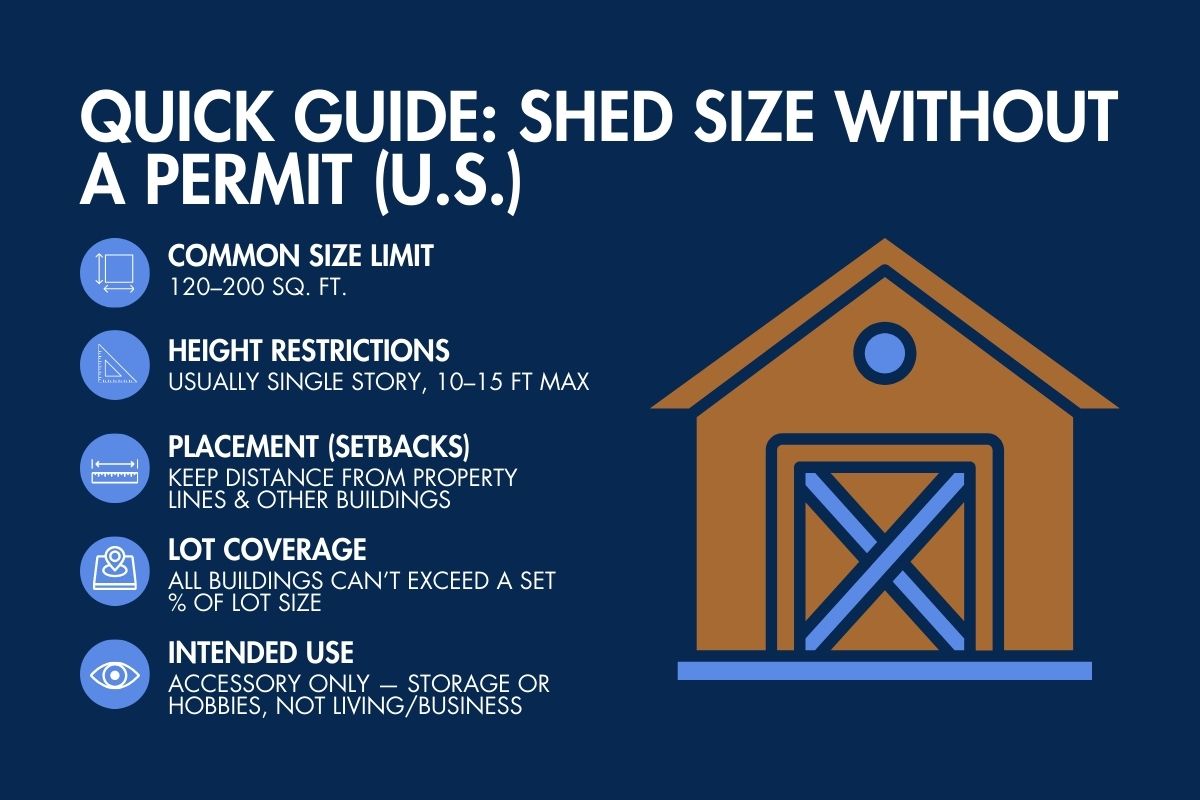
Understanding US Building Permits and Zoning Laws for Sheds
If you’re wondering about the biggest shed without planning permission (or a building permit as it’s known in the US), you need to understand two key concepts: building codes and zoning laws. Think of these as the rulebook for building safely and being a good neighbor.
These regulations cover accessory structures like sheds, allowing you to build without a formal permit as long as you meet specific criteria. The key rule? Your shed must be for incidental use, meaning it supports your home life, not replaces it. We’re talking storage, workshops, or hobby spaces, not mini apartments.
Here’s something that catches many people off guard: lot coverage limits. All your structures combined, your house, garage, and shed, can’t cover more than a certain percentage of your total property area. This is designed to prevent overcrowding and ensure proper drainage.
Your shed also needs to be a single-story structure. No dreams of a two-story shed kingdom without a full permit and engineering review!
What Are Building Permits and Zoning Laws?
Instead of a single national standard, rules in the US are set by local governments. This is why a quick call to your local building department is so important.
- Building Permits & Codes: These focus on safety and construction quality. They ensure your shed is structurally sound, properly anchored, and won’t collapse in a storm. They are based on models like the International Building Code (IBC) but are adopted and modified locally.
- Zoning Laws: These dictate what you can build and where. They control a shed’s location (setbacks from property lines), maximum height, and allowable size. Zoning ensures your new shed doesn’t block your neighbor’s light or sit right on the property line.
It’s your responsibility to ensure your project follows every rule. If you build a shed thinking it’s permit-free but break a zoning or code rule, you could face an order to move or even demolish it later. It’s much easier to get it right the first time.
What Is the Biggest Shed You Can Build Without a Permit in the US?
So, you want to know the maximum size, the true biggest shed without planning permission (a permit) you can build? It’s not just one number, but a combination of dimensions and placement rules that define the limit.
The most common permit exemption in the US is for sheds under a certain square footage. However, this is combined with rules for height, placement, and foundation that truly dictate the largest possible shed.
Height Restrictions: How Tall Can You Go?
Height is a critical factor, often determined by local zoning ordinances. Unlike the complex roof-type rules in the UK, US rules are typically more straightforward:
- Maximum Height: Most jurisdictions limit accessory structures to a single story, with a total height cap often between 10 and 15 feet. This prevents sheds from overshadowing neighboring properties.
- Setback Impact: The closer you build to a property line, the more restrictive the height limit might become. Some zones have tiered height limits based on distance from the boundary.
These height rules are vital to prevent your shed from appearing overly dominant in the landscape or negatively impacting your neighbors.
Floor Area: The Maximum Footprint Allowed
When considering the biggest shed without a permit, the floor area is the first thing people think about. In the US, there are a few common thresholds:
- The 120 Square Foot Rule: This is one of the most common limits nationwide. A 10×12 ft or 8×15 ft shed often falls under this rule, making it a safe bet in many areas.
- The 200 Square Foot Rule: Some more generous jurisdictions allow up to 200 square feet before requiring a permit. This gives you enough space for a substantial workshop or storage area.
Crucially, these are just general guidelines. We’ve seen towns just miles apart have different rules. Always check with your local building department for the exact number. When calculating your area, use the external footprint, and remember that it contributes to your property’s total lot coverage limit.
The Boundary Rule (Setbacks): What You Need to Know
Setbacks are a core part of US zoning law. They dictate the minimum distance your shed must be from property lines, your main house, and other structures.
- Typical Setbacks: A common requirement is to place a shed at least 3 to 5 feet from side and rear property lines. The setback from your house is often larger.
- Maintenance Access: Even if the code allows a 3-foot setback, consider practicality. Leaving enough room to walk around your shed makes maintenance, like painting or repairs, much easier without having to step onto your neighbor’s property.
- Neighbor Relations: A little courtesy goes a long way. It’s always good practice to discuss your plans with your neighbors, especially if your shed will be visible from their property. A friendly chat can prevent misunderstandings and potential disputes.
Special Circumstances and Exceptions
Not all properties play by the same rules when it comes to the biggest shed without planning permission. If you live in a community with a Homeowners’ Association (HOA) or in a designated historic district, you might find your shed-building dreams need a reality check.
These special circumstances exist to maintain a neighborhood’s aesthetic, protect property values, or preserve historical character. It doesn’t mean you can’t have a shed, but you’ll likely need to work within tighter limits or get additional approvals.
Rules for HOAs and Historic Districts
Living in a planned community or historic area often comes with extra rules. Your Homeowners’ Association (HOA) has its own set of covenants and restrictions that can be even stricter than local city or county laws.
- HOA Rules: An HOA might dictate the exact size, color, roofing material, and location of your shed. You will almost certainly need to submit your plans to an architectural review committee for approval before you can even think about building, regardless of whether a city permit is required.
- Historic Districts: If your property is in a designated historic district, any exterior alteration, including adding a shed, will likely require a special review and a “Certificate of Appropriateness.” The goal is to ensure new structures don’t detract from the historical character of the area.
Before you start measuring your yard, check your HOA documents and your local government’s zoning map to see if you’re in a special district.
How the Intended Use of the Shed Affects the Rules
Here’s where many people get tripped up. The rules aren’t just about size, they’re also about what you plan to do inside that shed. A permit-free shed is intended for uses that are “accessory” to the main house.
- Storage and Hobbies: These are perfectly fine. Garden tools, bikes, a woodworking bench, or a home gym all qualify as accessory use.
- Home Office: This can be a gray area. If you’re just working from home for your own job, it’s likely fine. But if you’re running a business with employees, regular customer visits, or creating noise and traffic, you’ve likely crossed into commercial use, which requires different permits.
- Self-Contained Living Accommodation: This is absolutely forbidden for a simple accessory shed. No bedrooms, bathrooms, or kitchens. The moment you plan for someone to live or sleep in the structure, it becomes a dwelling unit, which requires full building permits, inspections, and must meet much stricter codes for health and safety.
Navigating Shed Building Rules in the US
If you’re reading this from the United States, you’ve probably realized that finding the biggest shed without planning permission (or a building permit) is a local affair. While the principles are similar everywhere, the specific rules can make your head spin!
Having worked with customers across Utah, Idaho, Iowa, and Nebraska since 1997, I can tell you that American shed regulations are a patchwork of city, county, and state rules. What’s perfectly legal in one county might require a full permit application just twenty miles down the road.
That’s why the first question we always help our customers answer is simple: Do you need a permit to build a shed? The answer depends entirely on your local jurisdiction. Foundations are a big part of code compliance. In our service areas, frost depths commonly run \~30–36 in (UT/ID) and \~42–48 in (IA/NE), which drives footing depth and the choice between on-grade vs. frost-proof foundations.. We have extensive experience with different Shed Foundation Types to meet these varying requirements.
For our customers in Utah, we often reference the Utah Building Code for Sheds as a starting point, but we always stress that even within Utah, different cities can have their own additional requirements.
The bottom line? Always check with your specific local building department before breaking ground. It’s a five-minute phone call that can save you months of headaches. After 25+ years in the business, we’ve seen just about every variation you can imagine and are happy to help you find the right answer for your location.
Key Steps Before You Build
You’ve figured out the biggest shed without planning permission that works for your space, and you’re excited to get started. I get it, there’s nothing quite like the anticipation of having that perfect storage solution in your backyard! But hold on for just a moment. Taking a few important steps now can save you from major headaches and expenses down the road.
After nearly three decades in this business, I’ve seen too many enthusiastic homeowners jump straight into construction, only to face enforcement notices or costly modifications later. A little preparation goes a long way.
Your Pre-Build Checklist
The most important thing you can do is check with your local building or zoning department. I know it might seem like a hassle, but this single step can prevent a world of trouble. Most departments have websites with the rules for accessory structures, or you can simply give them a call. Ask specific questions about size limits, height restrictions, and setback requirements for your exact property.
- Inform your neighbours: This isn’t always legally required, but it’s a golden rule. A friendly chat about your plans can prevent misunderstandings and keep relationships smooth.
- Review property deeds and HOA rules: Check for any private covenants or HOA restrictions that go beyond city rules. These can catch you completely off guard.
- Measure accurately: Don’t just eyeball it. Get precise dimensions of your property to ensure you comply with setback and lot coverage rules. Also, consider practical things like delivery access for our trucks.
What Happens If You Build Without a Permit?
Building without proper permission is a gamble, and the consequences can be severe. I’ve seen homeowners face stop-work orders or notices of violation demanding they modify or even demolish their new sheds.
Fines can pile up quickly, especially if you don’t address violations promptly. Even worse, if you ignore an order, the city or county might demolish your shed themselves and send you the bill.
Here’s something that really hurts: property sale complications. When you try to sell your home, unpermitted structures are a major red flag. They can delay sales, lead to demands for costly retroactive permits, or even cause buyers to walk away.
Legal costs from dealing with these issues can quickly spiral. As a company that’s built our reputation on quality and integrity, we always emphasize following the rules. It protects both your investment and your peace of mind.
Frequently Asked Questions about the Biggest Shed Without Planning Permissions
After helping thousands of customers steer shed regulations over the past 25+ years, I can tell you that certain questions come up again and again. Let me share the most common concerns we hear and give you the straight answers you need.
What is the biggest shed I can build without planning permission?
This is our most frequently asked question! In the US, we call it a “building permit,” and the biggest shed you can build without one depends entirely on your local city or county rules. There is no single national standard.
Many jurisdictions allow sheds of 120 square feet (e.g., 10×12 ft) without a permit. Some are more generous, allowing up to 200 square feet. However, these size limits are always combined with other rules for height (usually a single story) and placement (setbacks from property lines).
The only way to know for sure is to contact your local building department. What works in one town might not be allowed in the next one over.
Can I live in a shed in my garden?
The short answer is no. Using a shed as a living space or for sleeping is not allowed without turning it into a legal dwelling unit. This requires full building permits, architectural plans, inspections, and compliance with much stricter residential building codes for safety, plumbing, and energy efficiency.
Permit-free sheds are classified as “accessory structures” intended for storage, workshops, or hobbies. Attempting to live in one can lead to enforcement action, demolition orders, and hefty fines. Your shed can be a wonderful extension of your home life, just not as an actual home.
Do I need permission to run electricity to my shed?
You typically don’t need a building permit for the shed itself just to add power, but the electrical work itself absolutely requires a separate electrical permit and inspection.
In the US, all electrical work must comply with the National Electrical Code (NEC) and local amendments. This means the work must be designed, installed, and inspected to ensure it’s safe. You will need to hire a qualified, licensed electrician to do the work and handle the permit process.
Smart Tips for the Biggest Shed Without Planning Permission
Building the biggest shed without planning permission, or a building permit, as we say in the US, doesn’t have to be a minefield. With the right knowledge and a careful approach, you can create the perfect outdoor storage solution that meets all the rules while serving your family’s needs for years to come.
The key is always doing your homework first. A final check with your local building and zoning department is absolutely essential. Don’t rely on what worked for your neighbor or a general online guide, as regulations can vary dramatically even within the same county.
Make sure your shed’s size, height, location, and intended use all tick the right boxes before you commit. This upfront diligence protects your investment and saves you from the headache of fines or having to tear down your beautiful new shed.
Here at Wright’s Shed Co., we’ve been helping folks steer these waters since 1997. We understand the ins and outs of building codes across Utah, Idaho, Iowa, and Nebraska, and we’re passionate about creating storage solutions that not only look fantastic but stand up to the elements. Our commitment to durable construction and exceptional craftsmanship means your shed will be built to last, with upgraded features as standard and warranties.
Even the best-built shed needs to be legally compliant. We’re here to guide you through the process and answer any questions you might have. Ready to start planning? We can help you find the answer to: What size shed needs a permit?

